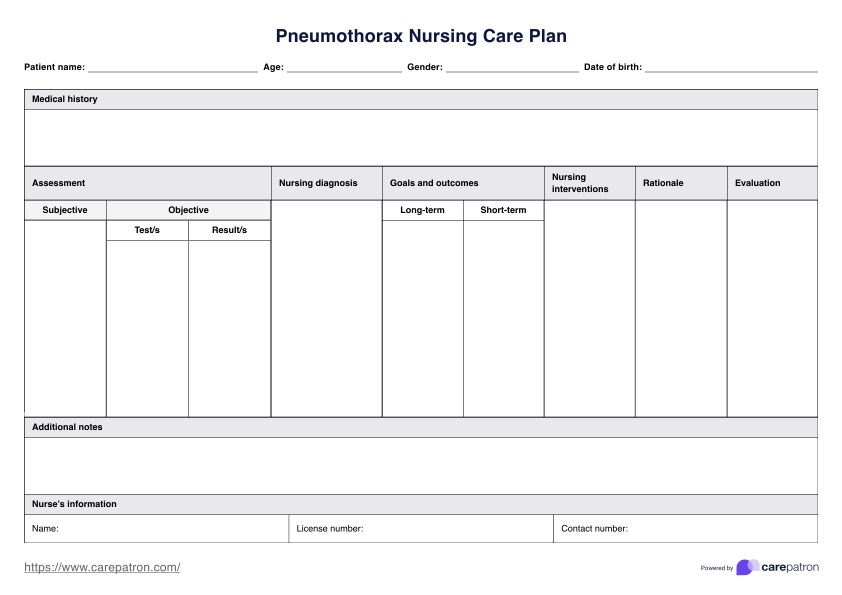Pneumothorax can be atraumatic or traumatic. Traumatic pneumothorax occurs due to a penetrating chest injury. On the other hand, atraumatic pneumothorax occurs without any apparent injury or trauma to the chest. Its two subtypes included primary and secondary spontaneous pneumothorax.
Primary spontaneous pneumothorax occurs in individuals without known lung issues, often due to air leaking from congenital blebs or cysts. Secondary spontaneous pneumothorax arises from underlying lung diseases, such as chronic obstructive pulmonary disease (COPD), emphysema, or asthma, which increase the risk of lung collapse. Another form, iatrogenic pneumothorax, results from medical procedures like chest surgeries or biopsies that allow air to leak into the pleural space.












